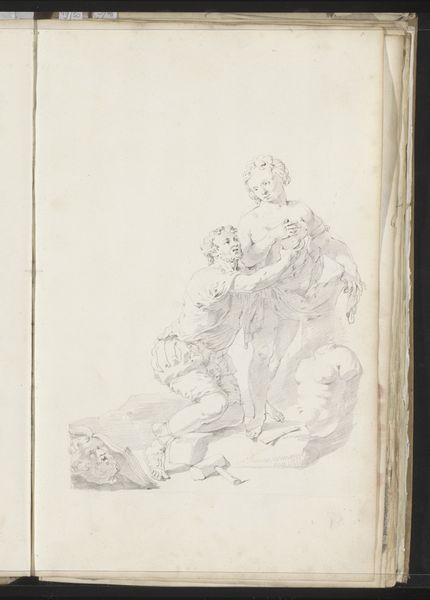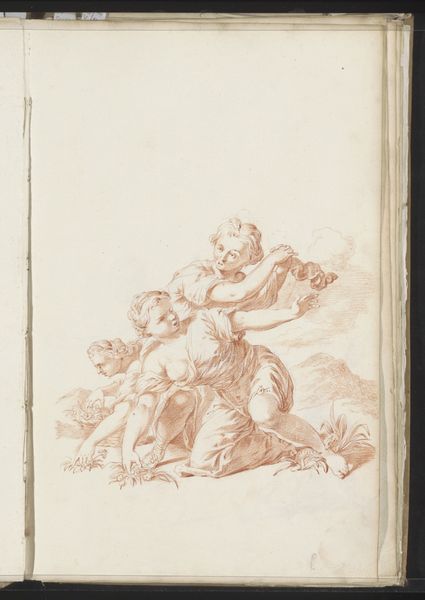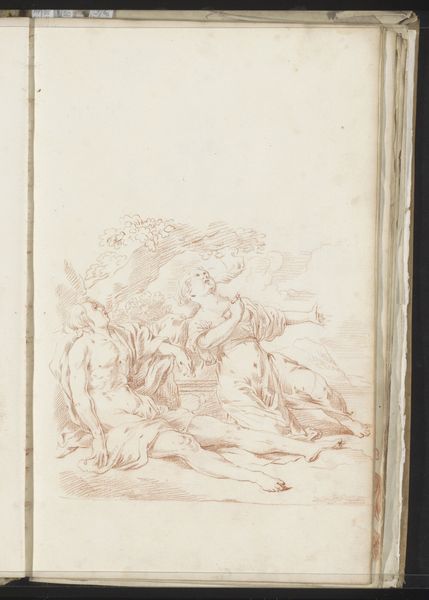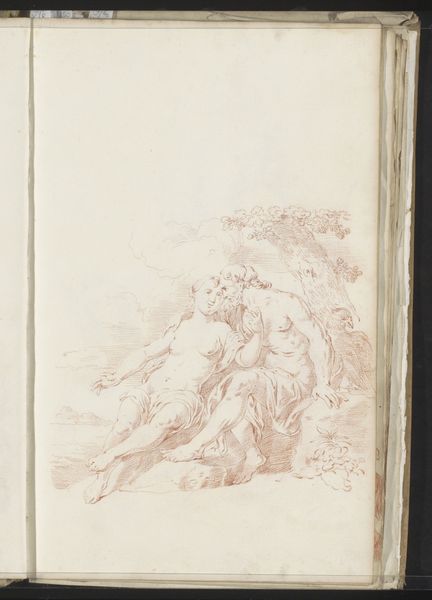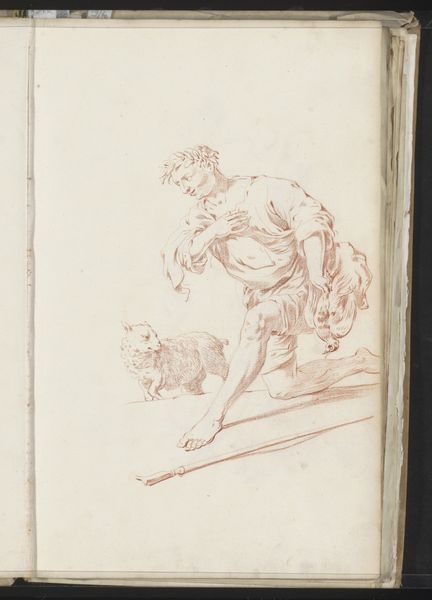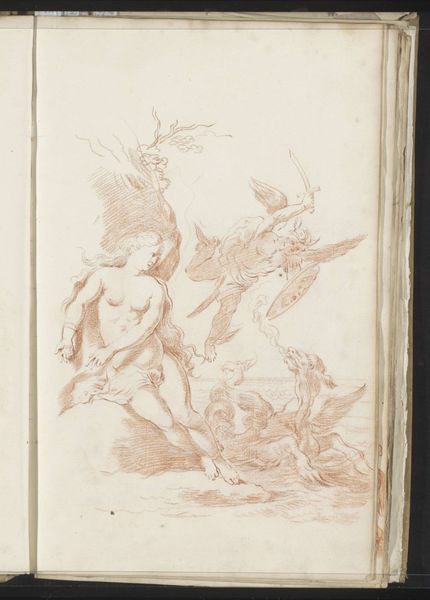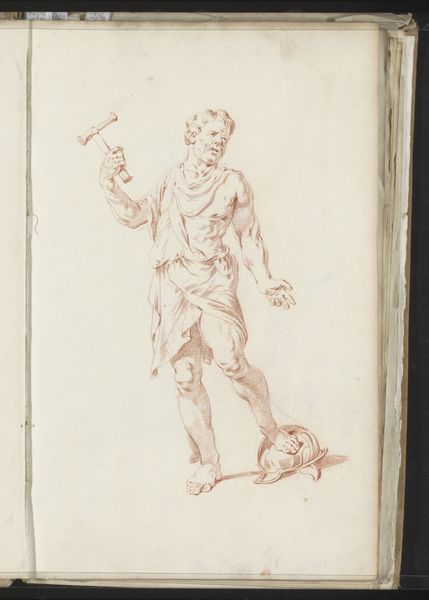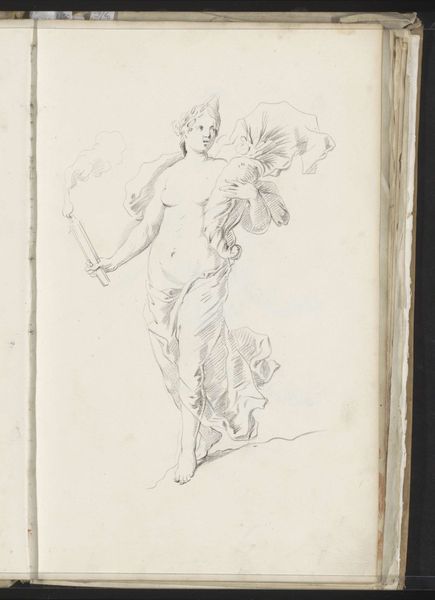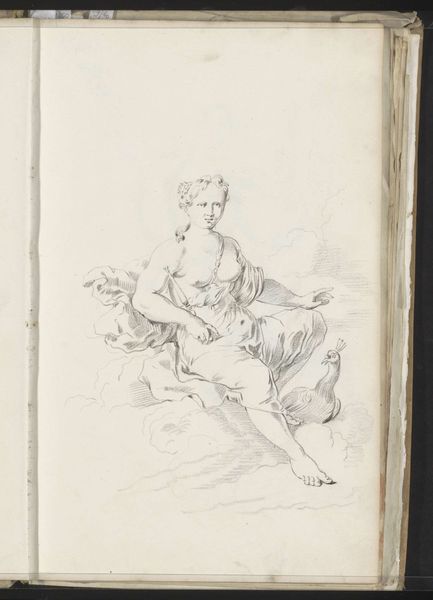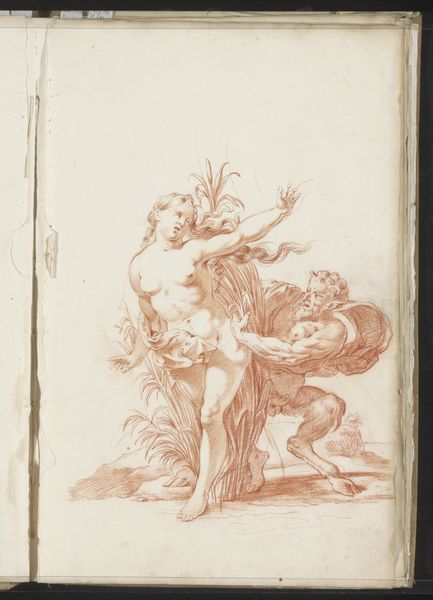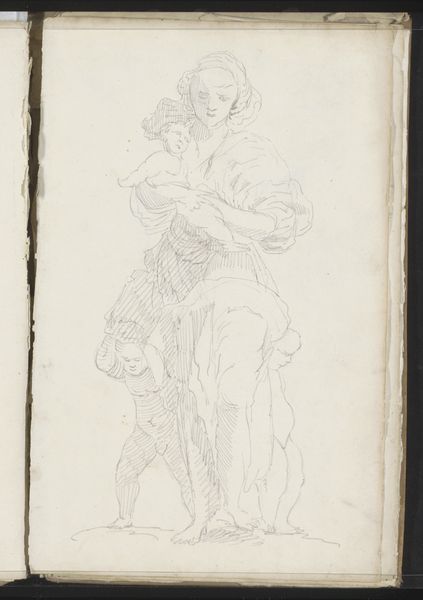
drawing, paper, ink
#
drawing
#
allegory
#
baroque
#
paper
#
ink
#
coloured pencil
#
genre-painting
#
nude
Copyright: Rijks Museum: Open Domain
Curator: Here we have Jacob Toorenvliet's drawing "Triton en Venus" from around 1701, executed in ink on paper. Editor: My first thought is "icy." The figures feel carved, statuesque almost, despite the fluidity suggested by the watery scene. And those dogs—their coats even look cold! Curator: An astute observation! It's intriguing how Toorenvliet utilizes a very restrained palette, relying almost exclusively on monochromatic shades, to convey a classical narrative. It’s likely the drawing functioned as a study, informing a larger work. Consider the availability and cost of pigments at this time—choices in rendering certainly would depend on economic factors as well as artistic ones. Editor: And that classical narrative being, of course, the encounter of Venus, goddess of love, and Triton, son of Poseidon. Those little dogs around Venus certainly point to fidelity. This is Venus Anadyomene; it's Venus arising from the sea, reborn and innocent in a sense. Curator: I agree. The smoothness of the paper would have been integral in achieving this effect of almost porcelain-like skin for the figures. Editor: Look closer. Even the direction of the lines informs how to see it, especially with her gaze directed heavenward, there's something fundamentally aspirational about this work, literally wanting to move upward. It’s an intriguing take that pulls from visual conventions that tie it to the hopes of an era. Curator: And Toorenvliet cleverly uses the dogs to ground her compositionally. A way to physically restrain the ascending goddess. Editor: Well, viewing this work has definitely given me some interesting material to think about and relate to my other pursuits! Curator: Indeed, and reflecting on the subtle yet precise material and rendering choices opens the door to a new understanding of baroque artistic creation.
Comments
No comments
Be the first to comment and join the conversation on the ultimate creative platform.
